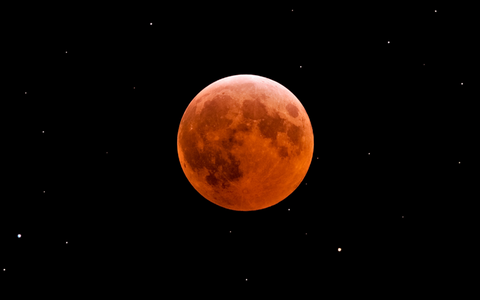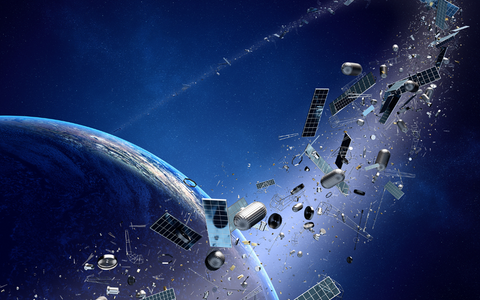2021 gave us 2 super Moons, one already happened (on April 26th) and one is just around the corner. The next, and last super Moon of the year will occur on Wednesday, May 26th, and will be the final super Moon of the year. It also happens to be a total lunar eclipse! So, grab your Astronaut Ice Cream because you do not want to miss this epic sight. Here's all that you need to know about this rare phenomenon.
When To See It
May 26th welcomes the full Flower Moon -- whose name should be of no surprise, as flowers spring forth across North America this month! This moon reaches peak illumination at 7:14 A.M (EDT) on Wednesday, May 26. For the non-early risers, it's best to venture outdoors the night of the 25th, to view the big bright full Flower Moon!
What Makes It a Super Moon?
A super Moon happens when the full Moon coincides with the Moon's closest approach to Earth in its orbit. In order for a super Moon to occur, two things must happen.
- The moon needs to be at its closest approach to the Earth in its 27-day orbit.
- The moon also needs to be at the full phase, which happens every 29.5 days when the sun fully illuminates the moon.
Super Moons make the Moon appear a little brighter and closer than normal, although this can sometimes be difficult to see with the naked eye. But wait . . . there's more!
A Super, SUPER Moon!
This month’s super Moon also coincides with a total lunar eclipse! What's a total lunar eclipse? A lunar eclipse is when Earth stands directly between the Moon and the Sun. This results in a shadow cast on the Moon. During a total lunar eclipse, the Moon is fully obscured by Earth’s shadow, giving the Moon a reddish hue. This phenomenon is where the term “blood moon” originates.
Other Interesting Facts About May's Super Moon
It Will Causes Dramatic 'King Tides' On Earth.

The lunar eclipse is a visual event but the “supermoon” nature of the Moon’s position will cause a very high and very low perigean spring tide -- also called a 'king tide' -- brings the threat of flooding to coastal areas.
The Pacific Rim Will Get The Best View

Those around the Pacific Rim, will get the entire view of the lunar eclipse. This means, in the US, those along the California cost will see a very a moon that appears to be very big, as it will hang low the horizon.
The Red Moon Will Be Next To a Red Supergiant Star

The Moon will be about 5° from an enormous star called Antares. This is the 15th brightest star in the night sky that is red when viewed with the naked eye. Antares – which means “rival of Mars –is about 700 times larger than the Sun.
The Milky Way Might Make An Appearance

During a total lunar eclipse the sky’s biggest light-polluter (A.K.A. the illumination of the Moon), is switched-off. For 14 minutes and 30 seconds no significant sunlight will flood the night sky . . . which means the Milky Way may appear! Keep your fingers crossed for clear skies!
Don't forget to grab your Astronaut Foods Snacks for summer Astrological events & stargazing!






